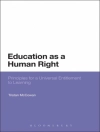Women with fish tails are among the oldest and still most popular of mythological creatures, possessing a powerful allure and compelling ambiguity. They dwell right in the uncanniest valley of the sea: so similar to humans, yet profoundly other. Mermaids: Art, Symbolism and Mythology presents a comprehensive, interdisciplinary and beautifully illustrated study of mermaids and their influence on Western culture. The roots of mermaid mythology and its metamorphosis through the centuries are discussed with examples from visual art, literature, music and architecture—from 600 BCE right up to the present day.
Our story starts in Mesopotamia, source of the earliest preserved illustrations of half-human, half-fish creatures. The myths and legends of the Mesopotamians were incorporated and adopted by ancient Greek, Etruscan and Roman cultures. Then, during the early medieval period, ancient mythological creatures such as mermaids were confused, transformed and reinterpreted by Christian tradition to begin a new strand in mermaid lore. Along the way, all manner of stunning—and sometimes bizarre or unsettling—depictions of mermaids emerged. Written in an accessible and entertaining style, this book challenges conventional views of mermaid mythology, discusses mermaids in the light of evolutionary theory and aims to inspire future studies of these most curious of imaginary creatures.
Daftar Isi
Preface
Memorial note
1 Introduction: Why mermaids?
2 Mermaids conceived: hybrid goddesses and beasts in antiquity
3 Christian adaptations in the Romanesque to Baroque eras
4 Mermaid passions: obsessive fixation in nineteenth- and early twentieth-century art
5 Mermaids everywhere: postwar commercialization and trivialization
6 Mermaids rationalized: evolutionary theory confronts the fantastic
References
Acknowledgements
Index
Tentang Penulis
Ben Williamson is an Associate Professor in Applied Mineralogy at University of Exeter. His research has focused on the nature and origin of granites and associated mineralisation, and the environmental impacts of mining. He is also dedicated to teaching and inspiring the next generation of geologists.





![Sampul Sarah B. B. (University of Central Florida, Orlando, FL, USA) Bush & Kristin L. L. (Bellarmine University, USA) Cook: Simplifying STEM [6-12] Sampul Sarah B. B. (University of Central Florida, Orlando, FL, USA) Bush & Kristin L. L. (Bellarmine University, USA) Cook: Simplifying STEM [6-12]](https://static.worldofdigitals.com/thumb_webp/414/9781071932414.webp)






